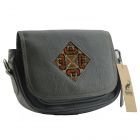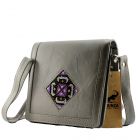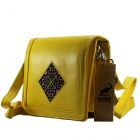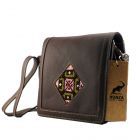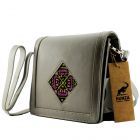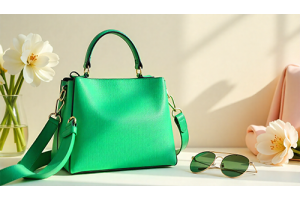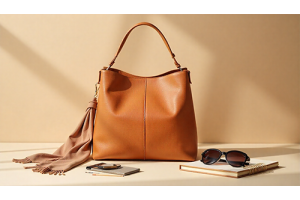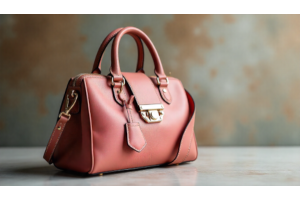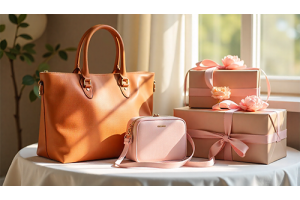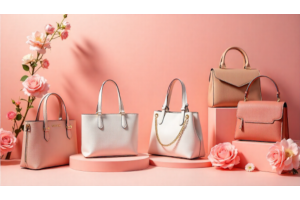The Ultimate Guide to Buying Sustainable Leather Bags
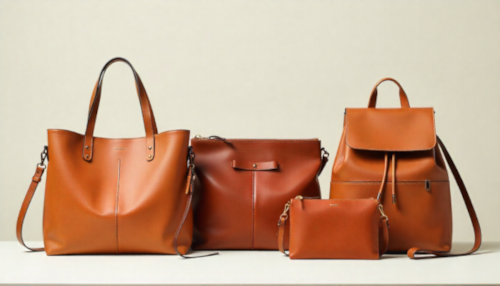
The Ultimate Guide to Buying Sustainable Leather Bags
Sustainable leather bags combine timeless style with eco-conscious craftsmanship. In this guide, you’ll learn how to choose leather bags that are durable, ethically made, and better for the planet — without compromising on design or quality.
- 1. Introduction – The Ultimate Guide to Buying Sustainable Leather Bags
- 2. Understanding Sustainable Leather
- 3. Eco-Friendly Materials and Ethical Sourcing
- 4. Quality and Durability – What to Look For
- 5. Certifications and Standards to Know
- 6. Balancing Style and Functionality
- 7. Caring for Your Sustainable Leather Bag
- 8. Conclusion – Making a Responsible Choice
- 9. FAQs
1. Introduction – The Ultimate Guide to Buying Sustainable Leather Bags
Leather bags have long been a symbol of sophistication, quality, and lasting style. But as sustainability becomes a growing priority in fashion, more people are asking the right questions about where their leather comes from and how it’s made. Choosing a sustainable leather bag isn’t just about aesthetics — it’s about supporting ethical craftsmanship, eco-friendly tanning processes, and fair labor practices that reduce the industry’s environmental footprint. In this guide, we’ll walk you through everything you need to know before buying a sustainable leather bag — from understanding responsible sourcing and eco-conscious materials to evaluating quality, durability, and design. Whether you’re an everyday commuter, a fashion enthusiast, or a conscious shopper, this guide will help you make an informed choice that blends timeless beauty with responsible living..
- Leather bags have always represented timeless elegance, durability, and craftsmanship.
- As sustainability becomes essential in fashion, buyers are now seeking eco-friendly and ethically made options.
- Choosing a sustainable leather bag means supporting responsible sourcing, natural tanning methods, and fair labor practices.
- This guide covers everything you need to know — from material selection to identifying brands that prioritize environmental responsibility.
- Whether you’re a fashion lover or a conscious shopper, this guide helps you make a stylish yet sustainable investment.
Tip
Leather bags have always been a symbol of elegance, durability, and timeless craftsmanship, but as the fashion industry shifts toward sustainability, conscious consumers are looking beyond just style. Choosing a sustainable leather bag means supporting eco-friendly production methods, ethical sourcing, and skilled artisans who value quality over mass production. These bags are made using responsibly tanned leather, often from recycled or vegetable-based materials, reducing environmental harm while maintaining premium appeal. In this guide, we’ll explore everything you need to know before investing in one — from identifying sustainable materials and ethical brands to understanding how to care for your bag so it lasts for years. Whether you’re drawn to classic silhouettes or modern designs, this guide will help you make a stylish, responsible, and lasting choice that aligns with both your values and your wardrobe.
2.Understanding Sustainable Leather
Sustainable leather is about more than just the material — it’s about how it’s sourced, processed, and produced with minimal environmental impact. Unlike conventional leather, which often involves harmful chemicals and waste, sustainable leather focuses on eco-friendly tanning methods, ethical sourcing of hides, and transparency in production. This approach ensures that the leather retains its natural quality while reducing pollution and supporting fair labor practices. Many sustainable leather brands use vegetable tanning, recycled leather, or byproducts from the food industry to create durable, high-quality bags without contributing to excessive waste. By understanding what makes leather truly sustainable, you can make more responsible choices that combine long-lasting beauty with conscious living.
- Sustainable leather goes beyond appearance — it focuses on how the material is sourced, processed, and produced responsibly.
- Unlike conventional leather that uses harsh chemicals, sustainable leather relies on eco-friendly tanning and minimal waste production.
- Ethical sourcing ensures hides come from responsible farms and that workers are treated fairly throughout the process.
- Common sustainable methods include vegetable tanning, recycled leather, and upcycling byproducts from the food industry.
- This approach reduces pollution, supports fair trade, and delivers durable, high-quality bags that last for years.
- Understanding these practices helps consumers make conscious, stylish choices that support a cleaner, more sustainable fashion industry.
Style Meets Functionality
Sustainable leather bags prove that fashion and practicality can coexist beautifully. They’re designed not only to look elegant but also to serve everyday needs with comfort and versatility. From structured totes and sleek crossbody bags to spacious backpacks, each piece blends refined craftsmanship with thoughtful design. These bags often include features like adjustable straps, multiple compartments, and durable stitching — ensuring they remain stylish and useful for years. Choosing a sustainable leather bag means investing in timeless appeal without sacrificing functionality, making it the perfect balance of form, purpose, and conscious living.
- Sustainable leather bags combine elegant design with everyday practicality.
- They offer both timeless style and functional features for modern living.
- Popular designs include structured totes, sleek crossbody bags, and spacious backpacks.
- Each piece showcases refined craftsmanship with thoughtful details like adjustable straps and organized compartments.
- Durable stitching and high-quality materials ensure long-lasting performance and beauty.
- Choosing a sustainable leather bag means enjoying both form and function while supporting eco-conscious values.
| Aspect | Description |
|---|---|
| Design & Aesthetics | Sustainable leather bags blend timeless elegance with modern design to suit any occasion. |
| Practical Features | Includes adjustable straps, sturdy zippers, and multiple compartments for everyday convenience. |
| Versatility | Available in a variety of styles — from structured totes to minimalist crossbody bags. |
| Durability | Crafted with reinforced stitching and premium materials to ensure long-lasting use. |
| Eco-Conscious Value | Each bag supports sustainability by balancing fashion with ethical and functional design choices. |
Key Benefits of Sustainable Leather Bags
- Eco-Friendly Choice: Made with environmentally responsible materials and tanning processes that reduce pollution and waste.
- Ethical Production: Supports fair labor practices and responsible sourcing from sustainable farms.
- Long-Lasting Quality: Designed for durability, ensuring your bag ages beautifully and lasts for years.
- Timeless Design: Combines classic elegance with modern versatility for any occasion.
- Value for Money: A durable, ethical investment that minimizes the need for frequent replacements.
- Conscious Living: Reflects a sustainable lifestyle that aligns with eco-conscious values and mindful consumption.
3. Eco-Friendly Materials and Ethical Sourcing
Eco-friendly materials and ethical sourcing form the foundation of sustainable leather production. Unlike conventional methods that rely on toxic chemicals and mass manufacturing, sustainable leather emphasizes natural tanning processes, such as vegetable or water-based tanning, to minimize pollution and waste. Many brands are now using recycled or upcycled leather, repurposing existing materials to reduce environmental impact. Ethical sourcing also ensures that hides come from responsibly managed farms where animal welfare and fair labor practices are prioritized. By choosing brands that value transparency and sustainability throughout their supply chain, consumers can support a cleaner, more responsible fashion industry while investing in leather bags that are both beautiful and conscientiously made.
- Sustainable leather focuses on eco-friendly production methods that reduce environmental harm.
- Natural tanning processes, such as vegetable or water-based tanning, replace harsh chemical treatments.
- Many brands use recycled or upcycled leather to minimize waste and extend the life of existing materials.
- Ethical sourcing ensures hides come from responsible farms that follow strict animal welfare standards.
- Fair labor practices are maintained, providing safe working conditions and fair wages for artisans.
- Transparency across the supply chain helps consumers make informed, sustainable purchasing decisions.
- By choosing ethically made bags, shoppers support eco-conscious fashion that values both people and the planet.
| Aspect | Description |
|---|---|
| Eco-Friendly Production | Focuses on reducing pollution through natural tanning methods like vegetable or water-based processes instead of chemical-heavy techniques. |
| Recycled and Upcycled Leather | Uses leftover or repurposed leather materials to minimize waste and make use of existing resources efficiently. |
| Ethical Sourcing | Ensures hides come from responsibly managed farms that prioritize animal welfare and sustainable practices. |
| Fair Labor Practices | Supports safe working conditions and fair wages for artisans involved in leather crafting. |
| Transparency | Promotes open communication about sourcing, production methods, and environmental impact throughout the supply chain. |
| Reduced Environmental Impact | By using renewable materials and ethical production methods, brands lower their carbon footprint and promote responsible fashion. |
Advantages of Eco-Friendly Materials and Ethical Sourcing
Choosing eco-friendly materials and ethically sourced leather offers more than just environmental benefits — it represents a shift toward responsible fashion. Sustainable leather production reduces pollution, minimizes waste, and supports fair labor practices, all while maintaining exceptional quality and style. By prioritizing transparency and responsible sourcing, brands create products that not only last longer but also make a positive impact on people and the planet. Understanding these advantages helps consumers make informed decisions and invest in leather goods that align with their values of sustainability and craftsmanship.
- Environmental Protection: Reduces pollution and chemical waste by using natural tanning and renewable materials.
- Ethical Labor Practices: Ensures fair wages, safe working conditions, and respect for artisans.
- Animal Welfare: Supports responsible sourcing where animals are treated humanely.
- Long-Lasting Quality: Produces durable, high-quality leather that ages beautifully over time.
- Reduced Waste: Encourages recycling and upcycling of leather, minimizing landfill impact.
- Transparency and Trust: Builds consumer confidence through honest sourcing and eco-certifications.
- Sustainable Fashion: Promotes a cleaner, more responsible approach to style and consumption.
| Advantage | Description |
|---|---|
| Environmental Protection | Eco-friendly materials reduce chemical waste, conserve water, and minimize pollution during leather production. |
| Ethical Labor Practices | Ensures safe working conditions, fair wages, and respect for artisans involved in crafting leather goods. |
| Animal Welfare | Promotes responsible sourcing from farms that prioritize humane treatment and sustainability. |
| Durability and Quality | Produces long-lasting, high-quality leather that retains its beauty and strength over time. |
| Waste Reduction | Encourages recycling and upcycling of materials, helping minimize landfill impact. |
| Transparency and Trust | Provides consumers with clear insight into sourcing and production, building confidence in sustainable brands. |
| Positive Global Impact | Supports a cleaner, more ethical fashion industry that values sustainability and social responsibility. |
Disadvantages of Eco-Friendly Materials and Ethical Sourcing
While eco-friendly materials and ethical sourcing bring significant benefits to the fashion industry, they also come with a few challenges worth considering. Sustainable leather production often requires more time, effort, and investment, which can make products costlier and less accessible. Some eco-friendly alternatives may not yet match the durability or consistency of traditional leather, and maintaining full transparency across supply chains can be complex. Understanding these limitations helps consumers make realistic, informed choices — recognizing that sustainability is about balance, not perfection.
- Sustainable production methods often take more time and resources, leading to higher product costs.
- Limited access to certified suppliers and tanneries can restrict the availability of sustainable leather options.
- Some eco-friendly materials may not offer the same durability or finish as traditional leather.
- Ensuring complete transparency across complex supply chains can be challenging for brands.
- Multiple sustainability certifications can cause confusion among consumers trying to verify ethical claims.
- Smaller sustainable brands may have fewer design variations and color choices compared to mass-market options.
- Despite the challenges, understanding these drawbacks helps consumers make realistic, responsible purchasing decisions.
4. Quality and Durability – What to Look For
When investing in a sustainable leather bag, quality and durability should be at the top of your checklist. A well-crafted bag not only looks beautiful but also lasts for years, reducing the need for frequent replacements and supporting a more sustainable lifestyle. Key indicators of quality include full-grain or top-grain leather, strong stitching, sturdy hardware, and thoughtful craftsmanship. Sustainable leather bags often feature natural textures and finishes that improve with age, giving them a unique patina over time. By focusing on durability, you ensure your purchase is both eco-conscious and economically smart — a timeless accessory that truly stands the test of time.
- Full-Grain or Top-Grain Leather: Choose leather that retains its natural grain for maximum strength and longevity.
- Strong Stitching: Look for tight, even stitches that prevent fraying and maintain the bag’s structure over time.
- Durable Hardware: High-quality zippers, clasps, and buckles ensure lasting performance and ease of use.
- Thoughtful Craftsmanship: Attention to detail in design and construction adds to both the bag’s beauty and durability.
- Natural Aging: Sustainable leather develops a rich patina as it ages, enhancing its character and appeal.
- Eco-Friendly Treatments: Tanned using natural or vegetable-based methods to minimize environmental impact.
| Feature | Description | Benefit |
|---|---|---|
| Full-Grain or Top-Grain Leather | High-quality leather that retains natural grain and texture. | Offers exceptional durability and a timeless look. |
| Strong Stitching | Precision stitching that holds the bag’s shape and prevents wear. | Ensures long-lasting structure and strength. |
| Durable Hardware | Includes zippers, clasps, and buckles made from sturdy materials. | Provides smooth function and resists breakage over time. |
| Thoughtful Craftsmanship | Careful design and detailed construction techniques. | Enhances both visual appeal and product life span. |
| Natural Aging | Leather that develops a unique patina with use. | Improves appearance and character over time. |
| Eco-Friendly Treatments | Uses vegetable or natural tanning methods. | Reduces environmental impact and chemical waste. |
Introduction for benefits
Choosing sustainable leather bags offers a perfect blend of style, durability, and responsibility. These eco-friendly accessories not only elevate your fashion game but also support ethical craftsmanship and reduce environmental harm. Made from responsibly sourced materials and treated with natural tanning methods, sustainable leather bags ensure long-lasting use while maintaining a timeless appeal. Investing in them means embracing quality, reducing waste, and contributing to a more conscious, sustainable lifestyle.
- Long-Term Investment: Sustainable leather bags are built to last, saving money in the long run.
- Eco-Conscious Choice: Environmentally friendly tanning and sourcing reduce pollution and waste.
- Unique Appearance: Each bag develops a rich patina, making it more beautiful over time.
- Ethical Production: Supports fair labor practices and responsible manufacturing.
- Timeless Style: Combines classic design with modern sustainability values.
- Low Maintenance: High-quality leather requires minimal care while maintaining its look and feel.
5. Certifications and Standards to Know
Certifications and standards play a crucial role in ensuring that your leather bag is genuinely sustainable and ethically produced. They verify that the materials are sourced responsibly, workers are treated fairly, and the manufacturing process meets environmental and safety benchmarks. When shopping for sustainable leather, look for certifications that guarantee transparency and authenticity rather than greenwashing. These labels not only help you make informed choices but also promote a more ethical and eco-conscious leather industry.
- Leather Working Group (LWG): Certifies tanneries that follow sustainable and environmentally responsible practices.
- Global Organic Textile Standard (GOTS): Ensures organic fibers and eco-friendly production methods in textiles and leather goods.
- ISO 14001: Recognizes manufacturers that manage their environmental responsibilities effectively.
- Fair Trade Certified: Guarantees ethical labor conditions and fair wages for workers involved in production.
- PETA-Approved Vegan: Identifies cruelty-free and vegan alternatives to traditional leather.
- OEKO-TEX Standard 100: Confirms that the leather or fabric is tested for harmful substances and safe for human use.
| Certification / Standard | Description | Key Benefit |
|---|---|---|
| Leather Working Group (LWG) | Audits and certifies tanneries based on environmental performance and sustainable leather production practices. | Ensures eco-friendly leather manufacturing and reduced water and chemical use. |
| Global Organic Textile Standard (GOTS) | Sets global standards for organic fibers and environmentally responsible production processes. | Guarantees organic materials and ethical, sustainable manufacturing. |
| ISO 14001 | International standard for environmental management systems in production. | Helps companies reduce waste, improve resource efficiency, and minimize environmental impact. |
| Fair Trade Certified | Focuses on ethical labor practices, fair wages, and safe working conditions. | Supports social responsibility and fair treatment of workers. |
| PETA-Approved Vegan | Recognizes cruelty-free, animal-free alternatives to traditional leather products. | Ensures no animals are harmed in the making of the product. |
| OEKO-TEX Standard 100 | Tests materials for harmful substances to ensure human ecological safety. | Provides assurance that leather or textiles are safe for consumers and the environment. |
Tip
Certifications are your best guide when choosing truly sustainable leather bags. They act as proof that a product meets strict environmental, ethical, and quality standards. Before buying, always verify the authenticity of these certifications and research the brand’s transparency regarding sourcing and production. Remember, while labels like LWG or GOTS ensure verified sustainability, some smaller artisans may also follow eco-friendly practices even without official certification. Staying informed helps you make smarter, more responsible choices that align with your values and the planet’s well-being.
- Check authenticity: Always verify certifications on the brand’s official website or product tag before purchasing.
- Prioritize transparency: Brands that clearly list their certifications and production practices are usually more trustworthy.
- Look beyond labels: Some uncertified artisans still follow sustainable methods — research their materials and process.
- Combine certifications: Products with multiple certifications (like LWG and Fair Trade) offer stronger sustainability assurance.
- Stay updated: Sustainability standards evolve; follow organizations like LWG or GOTS for the latest updates.
6. Balancing Style and Functionality
Balancing style and functionality is key when choosing a sustainable leather bag. A great bag should not only look elegant but also serve your daily needs with practicality and comfort. Sustainable leather bags combine timeless design with durable craftsmanship, offering versatile styles that fit work, travel, or casual outings. From spacious interiors and smart compartments to sleek, minimalist designs, these bags deliver both fashion and function. The goal is to invest in a piece that complements your lifestyle while standing the test of time — stylish enough to turn heads, yet practical enough for everyday use.
- Elegant Design: Bags that look stylish while complementing any outfit or occasion.
- Practical Compartments: Multiple sections and pockets for organized storage of essentials.
- Versatile Styles: Options suitable for work, travel, and casual use.
- Durable Craftsmanship: Sturdy construction that ensures long-lasting usability.
- Comfortable Carry: Adjustable straps and ergonomic design for easy handling.
- Timeless Appeal: A balance of modern aesthetics with classic design for long-term style.
| Feature | Description | Benefit |
|---|---|---|
| Elegant Design | Stylish appearance suitable for various occasions. | Enhances your overall look and complements outfits effortlessly. |
| Practical Compartments | Multiple pockets and sections for organized storage. | Makes it easy to carry essentials efficiently and accessibly. |
| Versatile Styles | Designs suitable for work, travel, and casual outings. | Provides flexibility to use the bag in different settings. |
| Durable Craftsmanship | High-quality construction using strong materials and stitching. | Ensures longevity and reduces the need for frequent replacements. |
| Comfortable Carry | Adjustable straps and ergonomic design for ease of use. | Reduces strain and enhances usability during daily activities. |
| Timeless Appeal | Blends classic design elements with modern aesthetics. | Maintains style relevance over the years. |
7. Caring for Your Sustainable Leather Bag
Proper care is essential to maintain the beauty, durability, and eco-friendly qualities of your sustainable leather bag. Regular cleaning, conditioning, and storage in appropriate conditions help prevent damage, cracking, or discoloration over time. Using natural or recommended leather care products ensures that the leather retains its softness, luster, and strength without introducing harmful chemicals. By investing a little time in routine maintenance, you not only extend the life of your bag but also protect your investment and support sustainable fashion practices that prioritize quality and longevity.
- Regular Cleaning: Wipe the leather gently with a soft, dry cloth to remove dust and dirt.
- Use Leather Conditioner: Apply a natural or recommended conditioner periodically to maintain softness and prevent cracking.
- Avoid Excess Moisture: Keep your bag away from water and damp environments to prevent damage and stains.
- Store Properly: Keep your bag in a dust bag or breathable cover when not in use, and avoid direct sunlight.
- Handle with Care: Avoid overloading your bag to maintain its shape and prevent stress on stitching and hardware.
- Spot Treat Stains: Use appropriate leather cleaning products for spills or marks, avoiding harsh chemicals.
- Rotate Usage: Give your bag breaks between uses to preserve its structure and longevity.
| Care Tip | Description | Benefit |
|---|---|---|
| Regular Cleaning | Gently wipe the leather with a soft, dry cloth to remove dust and dirt. | Prevents buildup of grime and maintains the bag’s appearance. |
| Leather Conditioner | Apply a natural or recommended conditioner periodically. | Keeps leather soft, prevents cracking, and prolongs lifespan. |
| Avoid Excess Moisture | Keep the bag away from water and damp environments. | Prevents water stains, warping, and damage to leather fibers. |
| Proper Storage | Store in a dust bag or breathable cover, away from direct sunlight. | Maintains shape, color, and overall condition. |
| Handle with Care | Avoid overloading the bag to reduce stress on stitching and hardware. | Preserves structural integrity and extends usability. |
| Spot Treatment | Use suitable leather cleaners for spills or stains. | Removes marks safely without damaging the leather. |
| Rotate Usage | Give the bag breaks between uses. | Reduces wear and helps maintain shape and durability. |
8. Conclusion – Making a Responsible Choice
Investing in a sustainable leather bag is more than a fashion decision — it’s a commitment to quality, ethics, and the environment. By choosing responsibly sourced materials, eco-friendly production, and ethically crafted designs, you support a fashion industry that values both people and the planet. Sustainable leather bags combine timeless style with long-lasting durability, offering practical benefits while reducing environmental impact. Ultimately, making informed, conscious choices allows you to enjoy beautiful, functional accessories while contributing to a more ethical and sustainable future.
FAQs
1. What makes a leather bag sustainable?
A sustainable leather bag is made using eco-friendly tanning methods, responsibly sourced hides, and ethical production practices that minimize environmental and social impact.
2. How can I tell if a leather bag is ethically made?
Look for certifications such as Leather Working Group (LWG) or Fair Trade, and check if the brand provides transparency about sourcing and production processes.
3. Which types of leather are most durable?
Full-grain and top-grain leathers are the most durable, maintaining strength, shape, and appearance over time.
4. How do I care for a sustainable leather bag?
Clean it regularly with a soft cloth, apply eco-friendly leather conditioner, and avoid exposing it to excessive moisture or harsh chemicals.
5. Are sustainable leather bags more expensive than regular bags?
They may cost slightly more due to ethical sourcing and eco-friendly production, but their durability and long-term value often justify the investment.
6. Can sustainable leather bags be stylish?
Yes, sustainable leather brands offer a variety of stylish designs, including totes, crossbody bags, backpacks, and mini bags suitable for various occasions.
7. What certifications should I look for when buying sustainable leather?
Common certifications include Leather Working Group (LWG), Global Organic Textile Standard (GOTS), ISO 14001, Fair Trade, and OEKO-TEX Standard 100.
8. Are eco-friendly leather bags suitable for everyday use?
Yes, high-quality sustainable leather bags are durable enough for daily use while remaining stylish and functional.
9. How long can a sustainable leather bag last?
With proper care, a sustainable leather bag can last 10–20 years or more, developing a rich patina that enhances its character over time.
10. How do I choose the right sustainable leather bag for my needs?
Consider factors like size, style, compartments, durability, and the eco-friendly practices of the brand to select a bag that fits your lifestyle and values.

